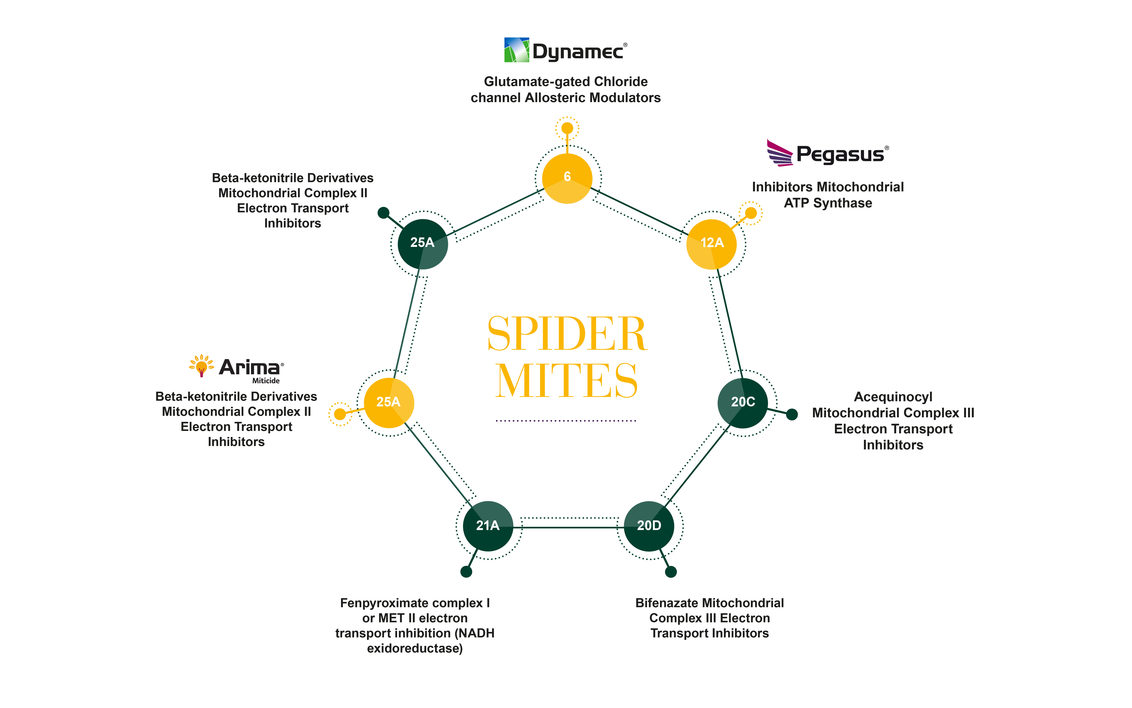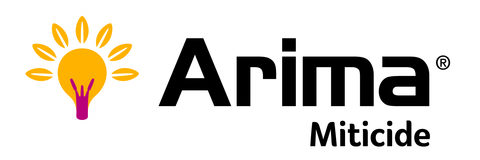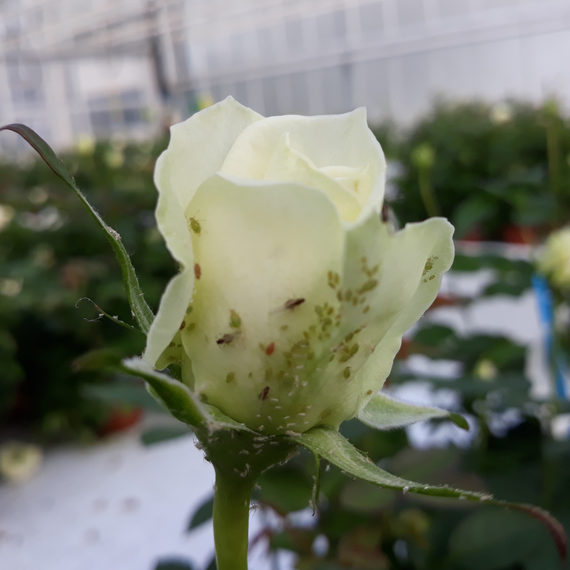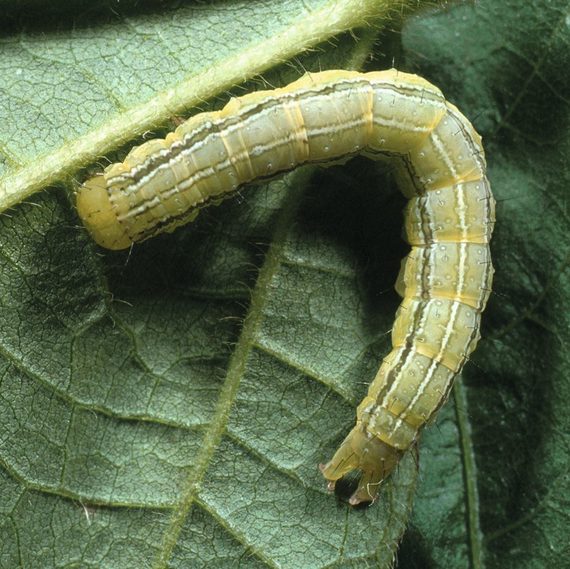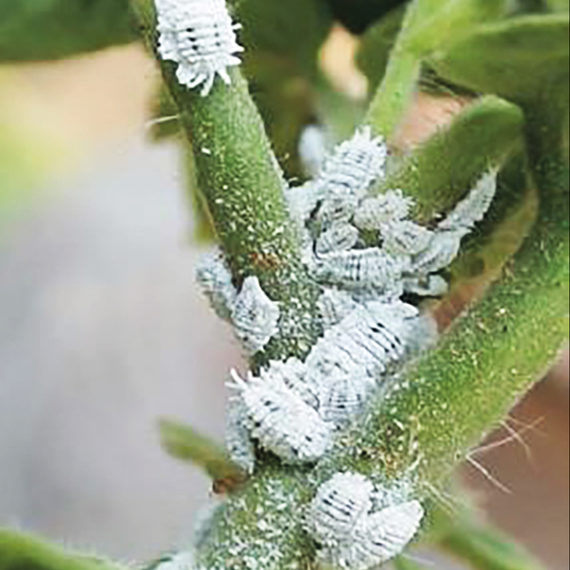Symptoms
Spider mites are especially abundant during dry seasons and typically colonize the under-surface of leaves. Nymphs and adults of the mite feed by piercing and sucking the cell sap from the epidermis of leaves resulting in removal of chlorophyl, reducing photosynthetic activity & transpiration, yellowing & speckling of leaves, premature leaf fall and stunting of growth. Infested flower petals lose their brightness resulting in a direct loss to the grower. Heavy infestation reduces the yield and quality of marketable flowers.
Management
An Integrated Pest Management (IPM) programme with a combination of biological, cultural and chemical controls.
Spider Mite Life Cycle
Understanding a disease's life cycle is vital to maintaining control in your crops. Below is the spider mite life cycle, to help you get the maximum control, the best products from our range have been incorporated.

Managing Resistance
The spider mite belongs to the group of arachnids. It will suck on the plant, creating yellow dots and a high infestation can weaken the plant leaving it susceptible to secondary infections and deformations of the leaf or flower.
The spider mite is highly polyphagous and can attack more than 180 different plant species. Spider mites like dry conditions, which is why you’ll generally find them at the top of the plant. In conducive conditions, the life cycle is complete in 5 days. During unfavourable cold periods, females go into a period of suspended development waiting for more suitable conditions.
To combat the spider mite during this period of diapause is very difficult. Resistance can easily develop due to its short life cycle. In a controlled environment it is good to start an integrated approach to its feeding. When there are high quantities of Spider mites and damage passes an acceptable threshold, the use of a chemical control can reset the balance so damage falls below a threshold. Alternating chemistry during feeding will help avoid resistance issues and lead to more long term control from products against the spider mite.
To prevent a crop developing resistance it is important that you alternate between the different active ingredients. It is important to pay attention to the mode of action the product has. The attached diagram shows the product and the IRAC code associated with it. Rotation of products is a key strategy but it’s important those products have different IRAC codes, as this can reduce further resistance development. Ensure your program takes this into account.
